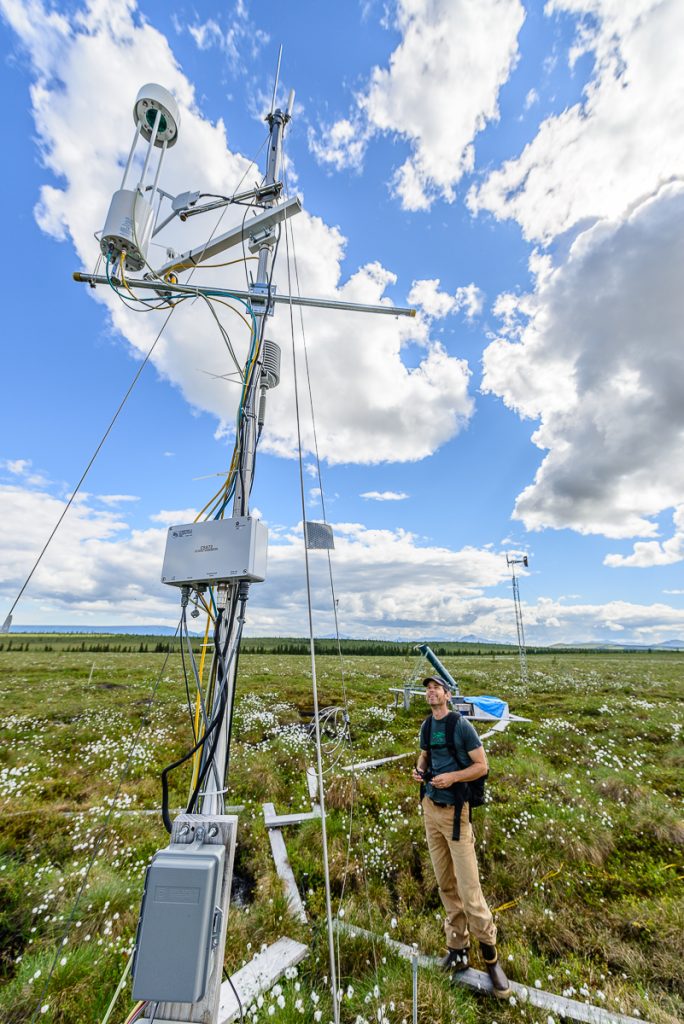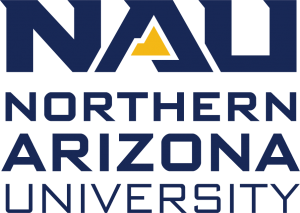
For decades at field stations across the Arctic, permafrost researchers like Northern Arizona University’s Ted Schuur have walked up to pipes drilled into the frozen ground and, with highly sensitive thermometers attached to cables, taken the Earth’s temperature.
Recently, their measurements suggest that even meters below the Earth’s surface, the state of permafrost—a once-permanently frozen layer of soil, vegetation and ice—may no longer be permanent. As this layer warms, microbes awaken and release large stores of carbon dioxide and methane into the world’s atmosphere.
Schuur, who’s received a $600,000 grant from the National Science Foundation to establish a carbon observatory at Eight Mile Lake near Denali National Park in Alaska, calls the permafrost’s massive release of greenhouse gases into the Earth’s atmosphere a “wild card,” and potentially a tipping point, for the global climate.
Like the point at which ice becomes water, certain thresholds yield dramatic consequences when they’re crossed. The permafrost at the observatory site in Alaska’s interior hovers just below zero degrees Celsius, potentially on the verge of rapid change. This makes it a good bellwether for Schuur to measure shifts and trends in this cycle.
“What’s so interesting about Eight Mile Lake is that it’s at this point where the permafrost is about to go through the biggest threshold change,” Schuur said. “We imagine large parts of the Arctic doing that in the future. So, it seemed like a good place to ask the question, ‘What’s going to happen to all the carbon?’”
The five-year NSF grant will help Schuur’s team answer that question. Part of the NSF’s Navigating the New Arctic initiative, the grant is offered through the Long Term Research in Environmental Biology (LTREB) program, which supports researchers who have already collected six years of continuous data. Using these parameters, LTREB grants are designed to support important scientific questions that require a longer timeline—often decades—to answer.
And a report earlier this month from north of the Arctic Circle has injected these permafrost questions with new urgency. According to National Geographic, a team of ecologists in Cherskiy, Russia, reported that sections of permafrost soils it studies never refroze this winter.
Though the Cherskiy field station does not have decades of continuous data to underpin this new finding, their observations match others made in elsewhere in the Arctic. Vladimir Romanovsky, a permafrost researcher at University of Alaska, Fairbanks, also observed two sites near Fairbanks where the permafrost soil failed to freeze again this year.
“This is really a very important threshold,” Romanovsky told National Geographic.
Schuur agrees.
“This is a big deal,” he told the magazine. “In the permafrost world, this is a significant milestone in a disturbing trend—like carbon in the atmosphere reaching 400 parts per million.”
When the permafrost thaws, now-frozen carbon can enter the atmosphere as greenhouse gases carbon dioxide and methane, affecting climate everywhere on Earth. Or, as a video from the NSF’s new Arctic initiative warns, “What happens in the Arctic does not stay in the Arctic.”
Kate Petersen | Center for Ecosystem Science and Society
(928) 523-2982 | kate.petersen@nau.edu



